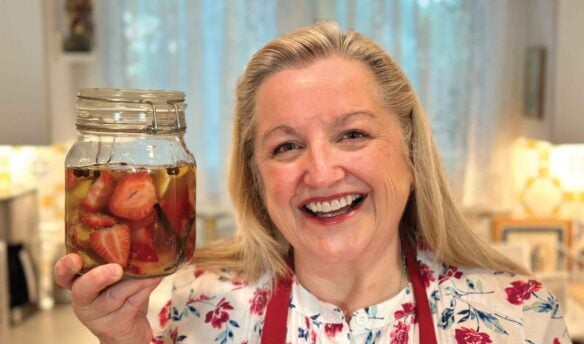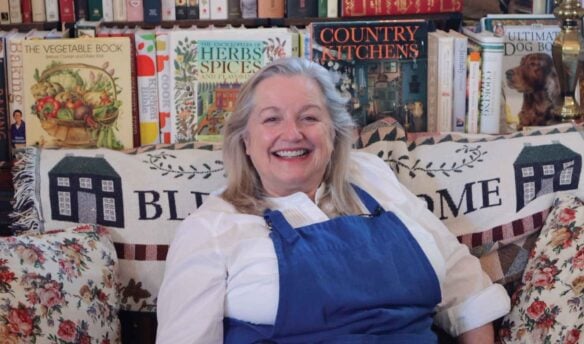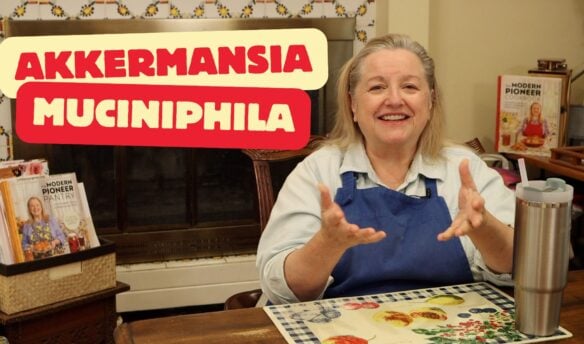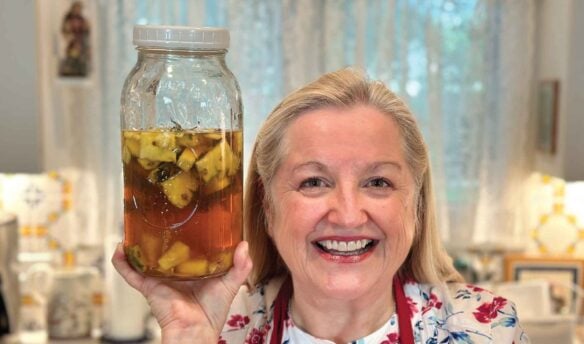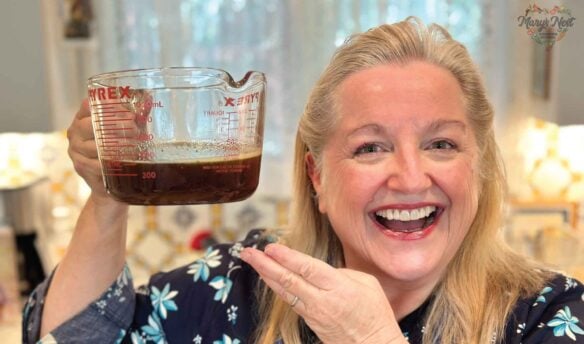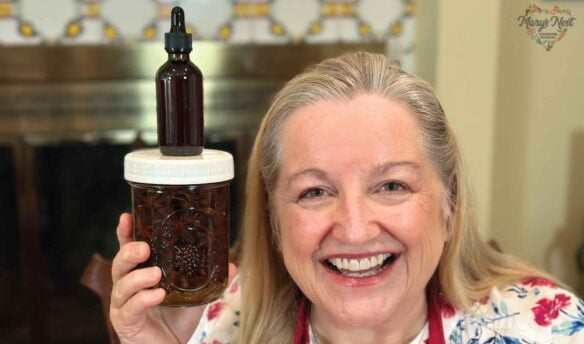Learn how to make this natural antibiotic ointment to soothe bug bites, minor cuts, and more! You can easily make this ointment with only five ingredients, and it can be ready in minutes.
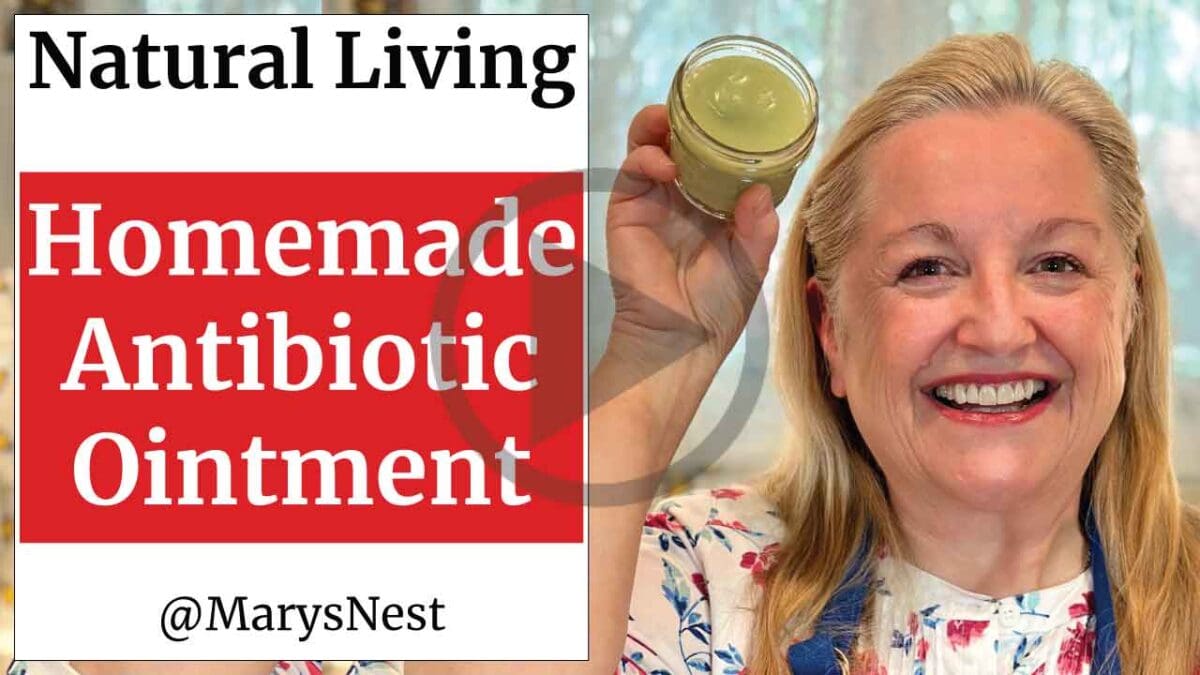
Affiliates note: As an Amazon Associate I earn from qualifying purchases. My content may contain affiliate links to products and services. If you click through and make a purchase, I’ll receive a small commission. It does not affect the price you pay.
Table of Contents
- What is a Natural Antibiotic Ointment?
- Disclaimer
- Ingredients for Making a Natural Antibiotic Ointment
- How to Make a Natural Antibiotic Ointment
- Variations
- Preparation Tips
- How to Store a Natural Antibiotic Ointment
- How to Use a Natural Antibiotic Ointment
- Master Recipes for Natural Remedies
- More Natural Remedies
- Download Your Free 36-Page Pantry List
- The Modern Pioneer Cookbook
- Join the Traditional Foods Kitchen Academy
- Kitchen Academy Videos
- Natural Antibiotic Ointment Recipe
- Shop for items used in this blog post or video
What is a Natural Antibiotic Ointment?
A natural antibiotic ointment is a soothing herbal balm or herbal salve that you apply externally. The ingredients in the ointment work to combat harmful microbes that can otherwise lead to infection.
For the natural antibiotic ointment you’re making with this recipe, the coconut oil serves as a broad spectrum anti-microbial along with the essential oils helichrysum and German chamomile.
The helichrysum essential oil and the other ingredients in this healing ointment also offer a whole host of benefits to help with skin inflammation, including these properties:
- Analgesic (pain relief)
- Anti-bacterial
- Anti-inflammatory
- Antiseptic
- Scar diminishing
- Skin regeneration
Read more about the benefits of the ointment’s ingredients in these research papers:
- Helichrysum italicum: From Extraction, Distillation, and Encapsulation Techniques to Beneficial Health Effects
- A Comprehensive Study of Therapeutic Applications of Chamomile
Disclaimer
I am not a doctor or medical professional. If you are not feeling well, please seek professional medical attention and medicine. And if you are thinking of supplementing your treatment with home remedies, be sure to talk to your medical professional about them. It’s important that you get the medicine and treatments you need to get back to good health.
Ingredients for Making a Natural Antibiotic Ointment
Find the full printable recipe with measurements below.
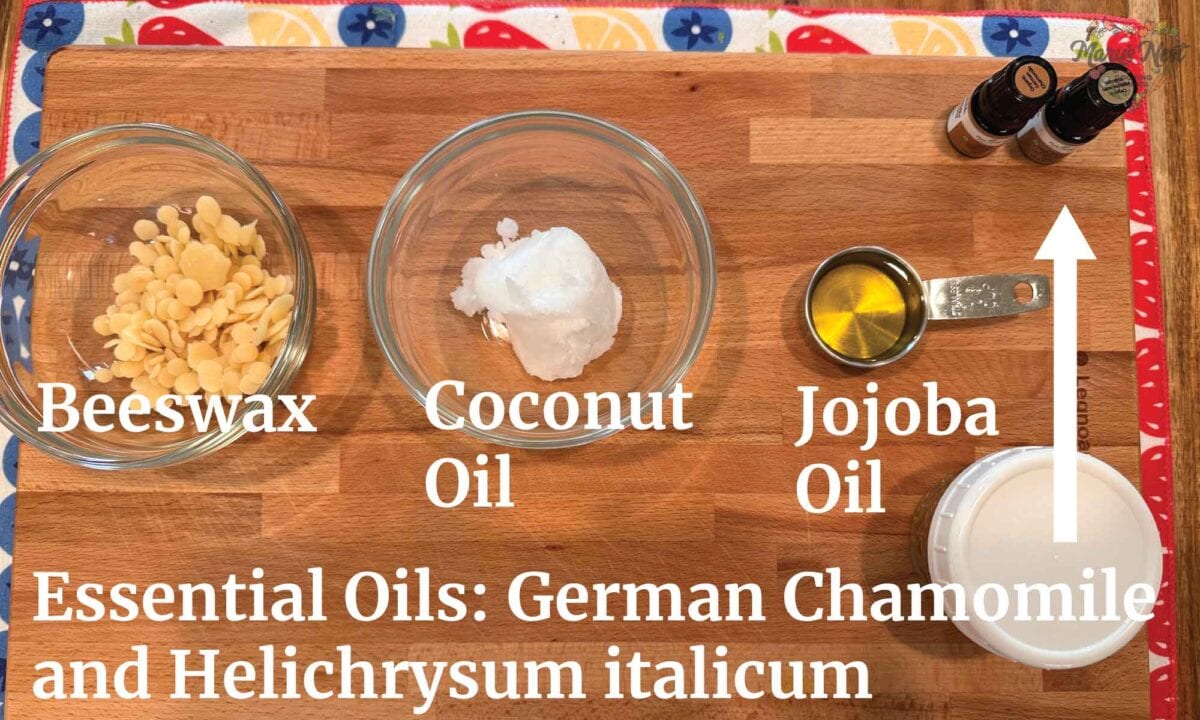
You only need 5 ingredients needed to make this natural antibiotic ointment:
- Beeswax – Provides soothing properties and makes for a smooth spreadable ointment.
- Coconut oil – Introduces a strong anti-microbial.
- Jojoba Oil – Helps to reduce scaring and acts as a natural preservative.
- German “Blue” Chamomile Essential Oil – Includes anti-microbial, anti-bacterial, anti-inflammatory, and analgesic properties.
- Helichrysum (italicum) Essential Oil – Includes anti-microbial, anti-inflammatory, antiseptic, and analgesic properties and helps diminish scarring and increase skin regeneration.
Get links to ingredients and supplies to make this antibiotic ointment.
How to Make a Natural Antibiotic Ointment
Find the full printable recipe with instructions below.
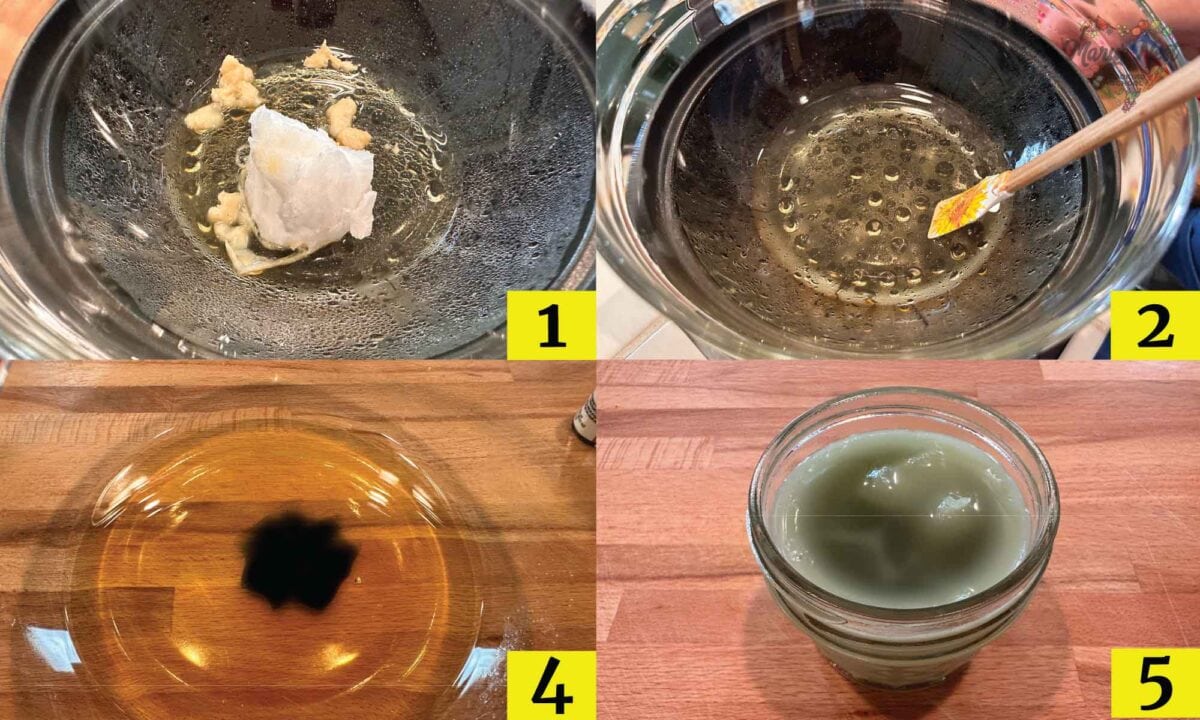
Making a natural antibiotic ointment is easy, and it can be ready in minutes.
- Place beeswax and coconut oil in a double boiler and melt over a very low heat.
- Turn off the heat, add in the jojoba oil, and stir well.
- Move the top of the double boiler (or bowl) to a heatproof surface. Allow to cool to a warm but no longer hot temperature. (Not shown in image above)
- Once warm, add in the essential oils, and whisk well to incorporate.
- Transfer to a glass jar with a lid to store.
Variations
Although jojoba oil is my first choice to use when making this antibiotic ointment, if you do not have any on hand, you can substitute this ingredient with extra-virgin olive oil.
Preparation Tips
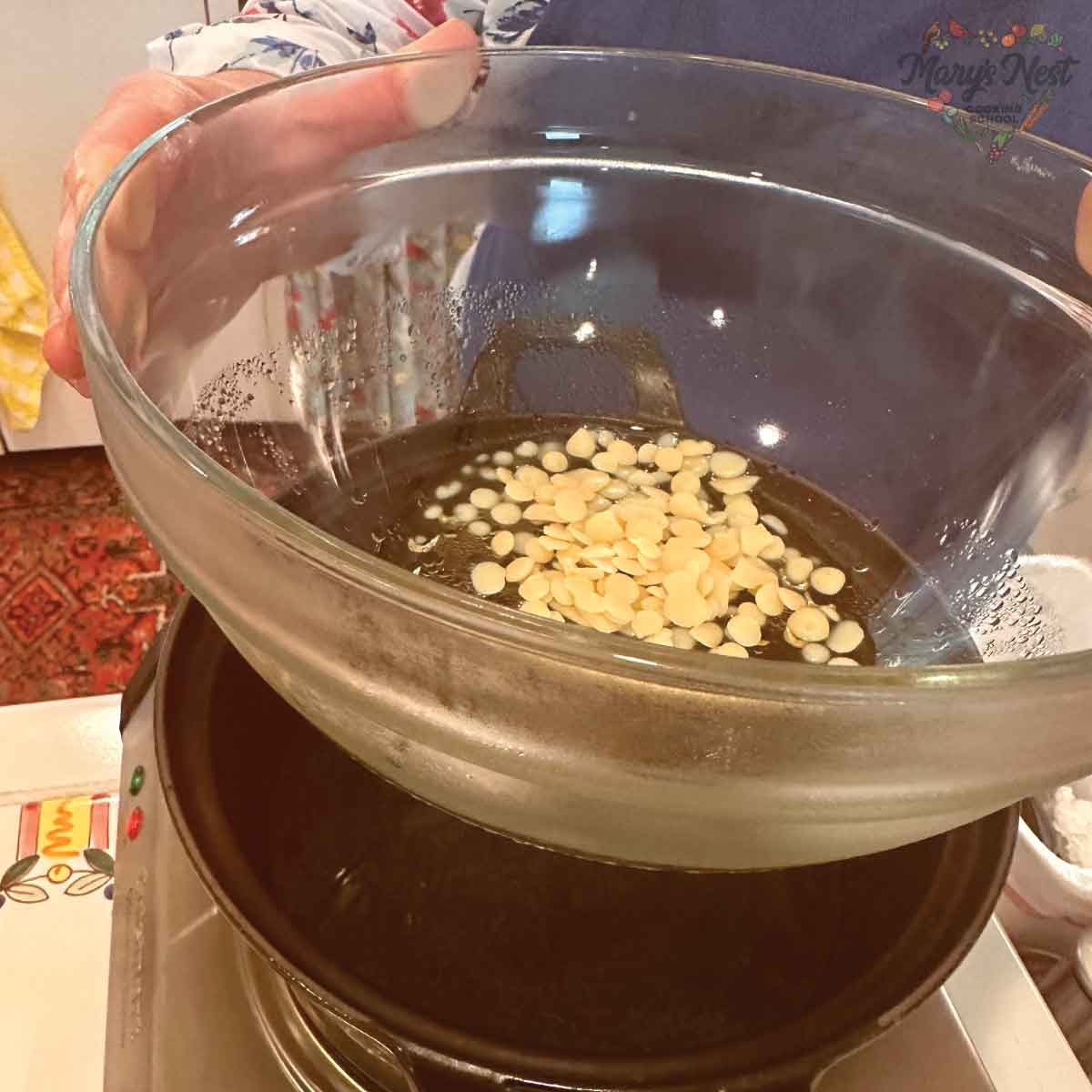
This antibiotic ointment is best made in a double-boiler or similar setup. However, if you do not have the equipment needed to prepare this recipe in a double boiler, you can also use a small saucepan.
Be sure to watch the beeswax pellets and coconut oil carefully as they are melting, as you do not want to allow the mixture to boil at any time.
How to Store a Natural Antibiotic Ointment
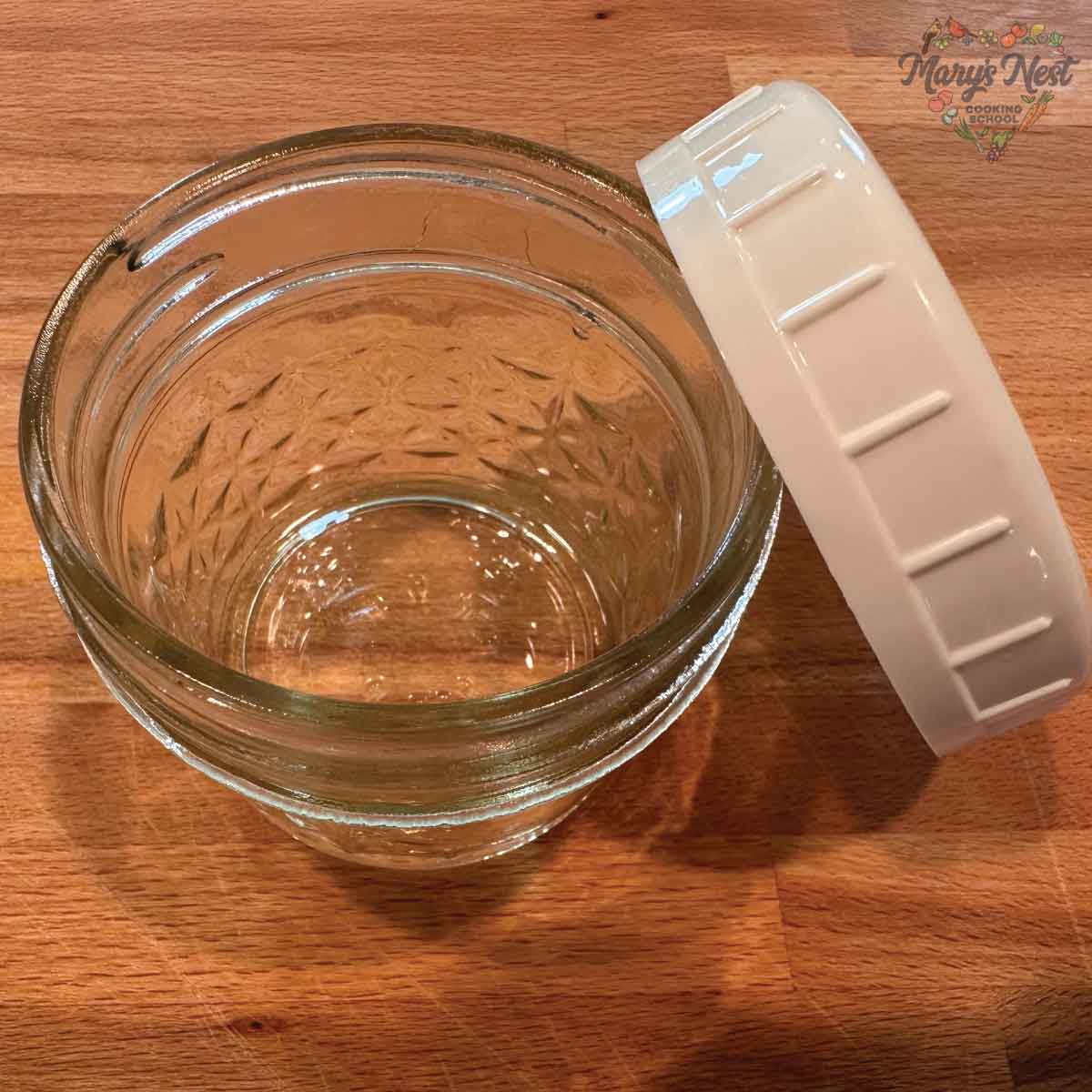
This Natural Antibiotic Ointment is best stored in a glass jar with a tight lid in a cool dark place. A kitchen pantry is perfect, or wherever you have set up your Herbal Medicine Cabinet within your Healing Pantry.
How to Use a Natural Antibiotic Ointment
You can apply this Natural Antibiotic Ointment to bug bites, minor cuts, scrapes, or abrasions, but first, be sure to wash the affected area well with warm soapy water, rinse well, and allow the skin to air dry. Once the skin is dry, gently apply the ointment.
Continue to apply the ointment for the first few days as the skin heals. If a scar remains once the skin has healed, continue to apply the ointment daily, rubbing it in well to help diminish the scar.
You can also apply this ointment to an old scar to help diminish it, as well as apply it to help soothe dry, cracked skin, such as on heels and elbows, and jagged and inflamed cuticles.
Master Recipes for Natural Remedies
Master recipes show you how to create a recipe but give you the flexibility to switch out the ingredients. Try the following master recipes and customize them to create the natural remedy that will help your needs.
- Medicinal Herbal Poultice using Fresh Herbs or Dried Herbs
- Medicinal Herbal Oils and Herbal Salves
- Medicinal Herbal Tinctures Using Any Herb
More Natural Remedies
How to Make the Most Flavorful Strawberry Digestive Bitters
Try these flavorful strawberry bitters for great taste and digestive support.
5 Most Surprising Anti-Inflammatory Drinks
You can find these surprising and flavorful anti-inflammatory drinks at your local grocery store or make them homemade.
5 Most Surprising Anti-Inflammatory Foods
Find these beneficial foods at your local grocery store or learn how to make many of them at home.
Download Your Free 36-Page Pantry List
For an extensive list of the traditional foods you can make and purchase to stock your pantry, be sure to download my free 36-page Traditional Foods Pantry List. This comprehensive eBook is full of links to recipe videos, helpful articles, and more!
And if you’re looking for a printed book full of my traditional foods recipes that shows you how to create a traditional foods kitchen, be sure to preorder your copy of my new book, The Modern Pioneer Cookbook.
Join the Traditional Foods Kitchen Academy
Are you looking for more traditional foods videos? If so, I invite you to join the Traditional Foods Kitchen Academy. Members of this optional paid YouTube community get access to exclusive videos, live streams, and other members-only perks. Plus, your YouTube comments include a special members-only badge.
Kitchen Academy Videos
How to Make Oatmeal Higher in Protein (The Old-Fashioned Way)
Turn simple oats into a hearty, protein-rich porridge.
The Only Traditional Recipes You’ll Ever Need!
Focus on traditional recipes with real food. Don’t chase trends.
Let’s Talk Akkermansia: A Tiny Helper for Big Gut Health
Discover how Akkermansia muciniphila supports gut and immune health—and how traditional foods help this mighty microbe thrive.
Stay in Touch with Mary’s Nest
- Subscribe to My YouTube Channel for Traditional Foods Videos (Free) - When you subscribe, be sure to click on the notification bell that will let you know each time I upload a new video.
- Subscribe to Mary’s Traditional Foods Newsletter (Free) - Get a free 36-page eBook for signing up: How to Stock Your Essential Traditional Foods Four-Corners Pantry.
- Join the Traditional Foods Kitchen Academy - For more detailed videos and exclusive members-only perks, join my YouTube membership community.
- Order The Modern Pioneer Cookbook - Get a hardcover book of Mary's nourishing recipes from a Traditional Foods Kitchen. This bestselling cookbook is published by Penguin Random House with their DK imprint.
- Order The Modern Pioneer Pantry - Get Mary's latest hardcover cookbook about preserving food and making delicious meals from your Four Corners Pantry. Mary's second cookbook is also published by Penguin Random House.
I look forward to having you join me in my Texas Hill Country Kitchen!
I’d like to receive more tips and recipes from Mary’s Nest.
Natural Antibiotic Ointment
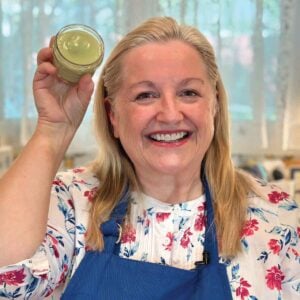
Equipment
- 1 Heatproof bowl for placing over soup pot
- 1 Funnel
Ingredients
- 2 tbsp Beeswax pellets Or use grated beeswax.
- 1/4 cup Coconut oil
- 1/8 cup Jojoba oil Alternatively, you can use extra-virgin olive oil.
- 10 drops German "blue" chamomile essential oil
- 20 drops Helichrysum essential oil Specifically the helichrysum italicum variety.
Instructions
- Place a soup pot on the stovetop, fill it no more than a quarter full of water, and turn the heat to its lowest setting.
- Place the heatproof bowl over the soup pot but make sure the bowl is not touching the water. (This setup simulates a double boiler.)
- Cook's Note: Alternatively, if you have a double boiler, you can use it instead of a soup pot and heatproof bowl. If all you have is a small saucepan, you can use it, but you will need to ensure the saucepan does not overheat.
- To the soup bowl, add the beeswax and allow it to begin to melt. Next, add in the coconut oil and allow both to melt completely. Stir well.
- Turn off the heat and pour in the jojoba oil. Stir well to incorporate.
- Using potholders, carefully remove the bowl from the soup pot and place the bowl on a heatproof surface. As you remove the bowl, angle it so that any steam escaping from the soup pot flows away from you in the opposite direction.
- Allow the mixture in the bowl to cool slightly so that you are able to comfortably touch the bowl. The bowl should be warm to the touch but not hot.
- Add the essential oils and whisk well to thoroughly incorporate.
- Using a funnel over the 4-ounce jar, carefully pour the mixture into the jar. Allow it to cool to room temperature.
- Once cooled, place the lid on the jar and store it in a cool dark place. (See Recipe Notes.)
- You can apply this natural antibiotic ointment to a bug bite or minor cut, scrape, or other abrasion once cleaned well with soap and warm water and allowed to air dry. This ointment also makes a wonderfully soothing balm for dry, cracked skin and especially for dry, jagged, or inflamed cuticles.
Video
Notes
Shop for items used in this blog post or video
Favorite Antibiotic Ointment Supplies
- Beeswax Pellets
- Coconut Oil
- Jojoba Oil
- German Chamomile Essential Oil
- Helichrysum Essential Oil
- Soup Pot
- Portable Cooktop
- Spatula
- Glass Bowls
- Magic Whisk
- Funnel
- 4-Ounce Jars
- Regular Mouth Storage Lids
Amazon Shop and Shopping Guide
- Visit Mary’s Nest Amazon Shop
- Visit my Shopping Guide page
Get up to 15% off for stocking your Traditional Foods Pantry and equipping your Modern Pioneer Kitchen, including discounts from US Wellness Meats, Farmhouse Teas, Backwoods Home, Masontops, Cultures for Health, Survival Garden Seeds, Redmond Real Salt, Mother Earth News, and More!
Recommended Reading
- The Modern Pioneer Cookbook
- Nourishing Traditions
- Rosemary Gladstar’s Medicinal Herbs: A Beginner’s Guide
- Andrew Weil’s Spontaneous Healing
Disclaimer:I am not a medical doctor, a medical professional, a dietician, or a nutritionist. All content found on the MarysNest.com website, including text, images, videos, eBooks or eGuides, social media, or other formats, were created solely for informational purposes only. The content is not intended to be a substitute for professional medical advice, diagnosis, or treatment. Always seek the advice of your physician or other qualified healthcare provider with any questions you may have regarding a medical condition or proper nutritional advice. Never disregard professional medical advice or delay in seeking it because of something you have watched in a video or read on this website. Use caution when following the recipe in this video. The creator and publisher of this video and website will not be held responsible for any adverse effects that may arise from the use of this recipe and method or any other recipe and method on this website or corresponding video channel.
